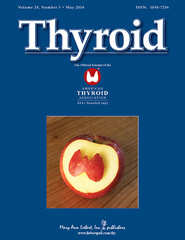Abstract
BACKGROUND:
Papillary thyroid cancer (PTC) is the most common type of thyroid cancer. Unlike most cancers, its incidence has dramatically increased in the last decades mainly due to increased diagnosis of indolent PTCs. Adequate risk stratification is crucial to avoid the over-treatment of low-risk patients, as well as the under-treatment of high-risk patients, but the currently available markers are still insufficient. Kallikreins (KLKs) are emergent biomarkers in cancer, but their involvement in PTC is unknown.
METHODS:
This study analyzed DNA methylation (HumanMethylation arrays) and gene expression (RNA-Seq) of KLKs, BRAF and RAS mutations, and clinical data from four published thyroid cancer data sets including normal and tumor tissues (n = 73, n = 475, n = 20, and n = 82) as discovery, training, and validation series. The C4.5 classification algorithm was used to generate a decision tree. Disease-free survival was estimated using Kaplan-Meier and Cox approaches. Specific analyses were performed using real-time polymerase chain reaction and immunohistochemistry.
RESULTS:
The entire KLK family was deregulated in PTC, displaying a specific epigenetic and transcriptional profile strongly associated with BRAFV600E or RAS mutations. Thus, a decision-tree algorithm was developed based on three KLKs with >80% sensitivity and >95% specificity, identifying BRAF- and RAS-mutated tumors. Notably, tumors lacking these mutations were classified as BRAF- or RAS-like. Most importantly, the KLK algorithm uncovered a novel PTC subtype showing favorable prognostic features.
CONCLUSIONS:
The KLK algorithm could lead to a new clinically applicable strategy with important implications for the risk stratification of PTC and the management of patients.

